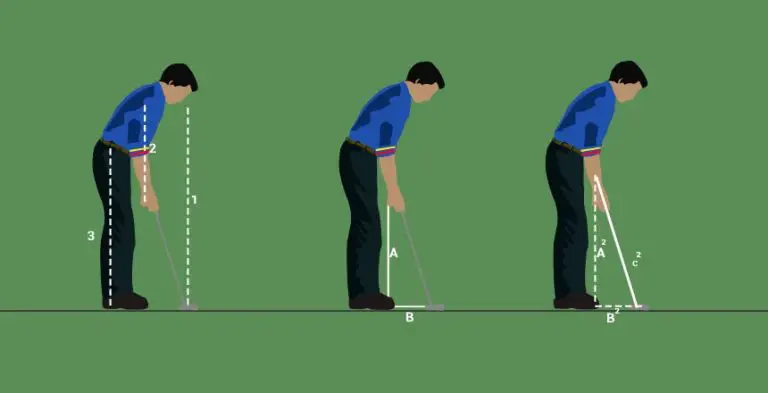What Does E Mean In Golf Score

Welcome to the exciting world of golf, where precision, strategy, and a touch of finesse combine to create a captivating sport. As you dive deeper into the intricacies of golf scoring, you may come across the enigmatic letter “E” appearing on scorecards or leaderboards. But what does “E” mean in golf score? In this comprehensive guide, we will unravel the meaning and significance of “E” in the context of golf scoring, providing you with a deeper understanding of this intriguing element of the game.
In the realm of golf, scores are more than just numbers; they tell a story of a golfer’s performance on the course. Each stroke, chip, and putt contributes to the final tally, revealing the skill and precision required to navigate the challenges of the game. “E” in golf score is an abbreviation for “Even” or “Even Par,” and it holds a special place in the golfer’s lexicon.
In this article, we will explore the definition of “E” in golf score, its relationship to par, and what it signifies in terms of a golfer’s performance. We will also provide insights into the strategies and challenges associated with achieving an “E” score. So, let’s tee off and embark on a journey to demystify the meaning of “E” in golf score.
:max_bytes(150000):strip_icc()/portugal-masters-59d52abcd088c00010624003.jpg)
What is the Definition of “E” in Golf Score?
In the context of golf scoring, “E” is an abbreviation for “Even” or “Even Par.” It signifies that a golfer has completed a round or a specific hole with a score equal to the par for that hole or course. The term “par” refers to the predetermined number of strokes that an expert golfer is expected to take to complete a hole or course.
Understanding the significance of “E” in relation to par is essential to gauge a golfer’s performance and competitiveness. In the following sections, we will delve deeper into the concept of par, explore the implications of scoring “E,” and provide strategies to help you achieve an “E” score in golf.
Understanding Par in Golf
Before we dive into the meaning of “E,” let’s explore the concept of par in golf. Par is the standard score that golfers strive to achieve for each hole and the overall course. It represents the number of strokes an expert golfer is expected to take to complete the hole or course, considering its length and difficulty.
The par for a hole is typically determined based on its length and the number of shots it would take an accomplished player to reach the green and subsequently hole out. Par values commonly range from 3 to 5 strokes per hole, with some longer and more challenging holes designated as par 4 or par 5.
What Does “E” Signify in Relation to Par?
Scoring “E” in golf signifies that a golfer has achieved par for the round or a specific hole. It indicates a strong performance where the golfer has completed the course or hole in the exact number of strokes expected of an expert player. Achieving an “E” score demonstrates skill, consistency, and the ability to navigate the challenges of the course effectively.
When a golfer scores “E,” it means they have not dropped any shots (bogeys or worse) and have successfully matched the par on each hole. It reflects a solid performance and positions the golfer competitively in relation to the rest of the field.
Scoring “E” can vary in difficulty depending on the course’s length, layout, and overall difficulty. Achieving an “E” score on a challenging championship course with a low par value requires exceptional skill and precision throughout the round.
Strategies for Achieving “E” in Golf
Scoring “E” in golf requires a combination of technical proficiency, course management, and mental fortitude. Here are some strategies that can help you aim for an “E” score:
- Consistency: Focus on consistency in your swing, approach shots, and putting. Minimize errors and maintain a steady rhythm throughout the round.
- Course Management: Analyze the layout of the course and strategize your shots accordingly. Make smart decisions on club selection, aim for safe targets, and avoid unnecessary risks.
- Accurate Approach Shots: Work on improving your approach shots to give yourself the best opportunities for birdie or par putts. Aim for the center of the green to minimize the chances of missing the target.
- Effective Putting: Develop a solid putting technique and practice reading greens. Focus on speed control and aim to sink those crucial par-saving putts.
Maintain a positive mindset and stay mentally engaged throughout the round. Manage stress and pressure effectively, and approach each shot with confidence and composure.
While these strategies can help you in your quest to achieve an “E” score, it’s important to remember that golf is a complex and challenging game. It requires dedication, practice, and adaptability to different course conditions.
Common Challenges in Achieving “E” in Golf
Scoring “E” in golf can be a demanding task, as numerous challenges can hinder your progress. Here are some common obstacles you may encounter:
- Course Difficulty: Some courses present significant challenges in terms of length, hazards, and fast greens. These factors can make achieving an “E” score more difficult, requiring exceptional shot-making skills and course management.
- Pressure: As you approach the end of a round with the possibility of scoring “E,” the pressure to maintain that score can increase. Nerves and the fear of making a mistake can impact your performance. Managing pressure and maintaining focus become crucial in these situations.
- Consistency: Maintaining consistency throughout an entire round is a challenge even for the most skilled golfers. One or two errant shots can disrupt your momentum and jeopardize your chances of scoring “E.” Developing a reliable swing and minimizing errors are key to achieving consistency.
To overcome these challenges, it’s important to remain resilient, stay focused on the present moment, and trust in your abilities. Practicing under pressure and playing regularly on different courses will also help enhance your skills and adaptability.
Examples and Case Studies
Looking at examples of professional golfers who have achieved an “E” score can provide inspiration and insights into the skills and strategies involved. Let’s explore a few notable cases:
- In the 2003 U.S. Open at Olympia Fields, Jim Furyk finished the tournament with a score of “E,” securing the title. His consistency and ability to match the par on a challenging course demonstrated exceptional skill and composure.
- In the 2016 Women’s Olympic Golf competition, Inbee Park of South Korea scored “E” for the tournament, winning the gold medal. Her consistent play and strategic approach to the course propelled her to the top of the leaderboard.
These examples highlight the importance of maintaining focus, managing challenges, and demonstrating exceptional skills to achieve an “E” score in competitive golf.
Conclusion
Scoring “E” in golf is a significant accomplishment that showcases a golfer’s ability to match the par for a round or a specific hole. It signifies consistency, skill, and effective course management. By understanding the meaning and implications of “E” in golf score, you can set ambitious goals for your game and strive for excellence on the course.
Remember that achieving an “E” score requires practice, patience, and a comprehensive understanding of the game. Implementing effective strategies, managing challenges, and maintaining a positive mindset will contribute to your pursuit of scoring “E” in golf. So, embrace the challenge, enjoy the journey, and may your future rounds be filled with “E” scores and success on the course!






